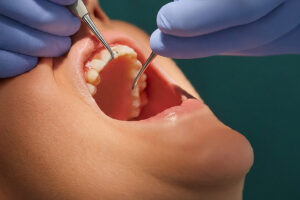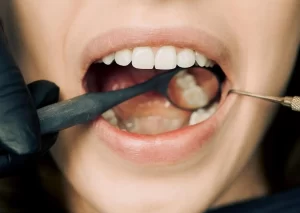What to Eat After Wisdom Teeth Removal

Recovering from wisdom tooth removal requires not just rest and proper care, but also a carefully selected diet that promotes healing and minimizes discomfort.
During this delicate period, choosing the right foods can significantly impact your recovery speed and comfort level.
Soft, nutritious, and gentle foods are your best allies in navigating the days following your surgery.
This article explores 25 ideal foods to eat after wisdom tooth removal, explaining why each is beneficial and how they contribute to a smoother, more comfortable recovery process.
Whether you’re looking for soothing cold treats, nutrient-rich smoothies, or soft, easy-to-consume meals, our guide ensures you’re well-equipped to make the best dietary choices during your healing journey.
25 foods to eat after wisdom tooth removal
After wisdom tooth removal, you need to choose foods that are soft, easy to consume, and gentle on the surgical site to aid in the healing process. Here are 25 options:
- Applesauce: It’s smooth and provides a good source of vitamin C and dietary fiber without requiring chewing.
- Ice Cream: Soft, cold, and soothing, ice cream can help numb the area and reduce swelling. Stick to plain flavors to avoid irritants.
- Smoothies: Packed with nutrients, smoothies can be a great way to get your vitamins and minerals without solid food. Avoid using straws as the suction can disrupt healing.
- Broths: Warm (not hot) broths provide hydration and nutrients. They are gentle on the mouth and can be very comforting.
- Gelatin: Easy to eat, gelatin can be soothing and is a fun way to consume liquids in a different form.
- Mashed Potatoes: Soft, comforting, and filling, mashed potatoes can be a good source of calories and nutrients without requiring much chewing.
- Scrambled Eggs: High in protein and soft, scrambled eggs are easy to consume and digest.
- Greek Yogurt: Rich in protein and probiotics, Greek yogurt is smooth and can help with digestion and oral health.
- Cottage Cheese: Soft, creamy, and high in protein, cottage cheese is easy to eat and provides calcium.
- Pudding: Soft and smooth, pudding can be a comforting dessert that requires no chewing.
- Bananas: Soft and nutritious, bananas are easy to mash and eat without causing strain.
- Avocado: Rich in healthy fats and vitamins, avocado can be mashed to a smooth consistency.
- Rice Porridge/Congee: Soft, warm, and comforting, rice porridge is easy to swallow and gentle on the stomach.
- Steamed Vegetables: Vegetables like carrots, spinach, or pumpkin can be steamed until very soft to provide nutrients without hard chewing.
- Hummus: Rich in protein and healthy fats, hummus is smooth and can be a good spread for other soft foods.
- Pasta: Well-cooked pasta, especially smaller shapes, can be easy to eat and gentle on the mouth.
- Soup: Creamy soups (without large chunks) can be nourishing and comforting. Ensure they are not too hot.
- Smooth Nut Butters: A good source of protein and healthy fats, smooth nut butters can be spread on soft bread or mixed into oatmeal.
- Soft Cooked Fish: Fish like salmon or tilapia are high in protein and omega-3 fatty acids and can be cooked until they’re very soft.
- Oatmeal: Soft and easy to customize, oatmeal is comforting and can be made with milk for extra protein.
- Soft Fruits: Fruits like peaches, pear, and melon can be eaten soft or pureed.
- Tofu: Soft tofu can be a good source of protein and is very gentle on the mouth.
- Milkshakes: Like smoothies, milkshakes can provide calories and nutrients in a liquid form. Again, avoid using straws.
- Soft Cheese: Soft cheeses like brie or camembert can provide calcium and protein without needing to chew.
- Quinoa: Well-cooked quinoa is soft and provides a good source of protein and fiber.
These foods are recommended because they minimize discomfort, reduce the risk of infection, and provide the necessary nutrients to support the body’s healing process after wisdom tooth removal.
Avoid foods that are too hot, spicy, crunchy, or hard, as they can irritate the wound or become lodged in the site, leading to complications.
What NOT to eat during recovery from wisdom tooth removal
After wisdom tooth removal, paying attention to what not to eat is just as important as knowing the right foods to consume.
Certain foods can disrupt the healing process, cause discomfort, or lead to infection.
Here’s a list of foods and types of food to avoid during your recovery:
- Crunchy Foods: Chips, popcorn, and hard crackers can irritate the surgical site and potentially get stuck in the sockets, leading to discomfort or infection.
- Hard Foods: Nuts, seeds, and hard candies require significant chewing force, which can strain the jaw and disrupt the healing process.
- Sticky Foods: Foods like caramel, chewing gum, and sticky candies can dislodge the blood clot that forms over the extraction site, increasing the risk of developing a painful condition known as dry socket.
- Spicy Foods: Spicy dishes can irritate the wound area, causing pain and discomfort.
- Acidic Foods and Beverages: Citrus fruits and juices, tomatoes, and foods high in acidity can irritate the mouth and extraction sites.
- Alcoholic Beverages: Alcohol can interfere with the healing process and the effectiveness of any prescribed medications. It can also increase the risk of bleeding and swelling.
- Very Hot Foods and Liquids: Hot beverages and foods can increase swelling and may cause burns if the area is still numb from anesthesia.
- Chewy Foods: Meats that require a lot of chewing, gum, and bagels can tire the jaw and potentially disturb the healing site.
- Granular Foods: Foods that can break into small pieces, like rice or quinoa, might get lodged in the extraction site, posing a risk for infection.
- Raw Vegetables and Hard Fruits: Raw carrots, apples, and similar hard foods are difficult to chew and can harm the surgical sites.
- Sugary Foods and Beverages: Excessive sugar can lead to dental issues and may affect the healing process.
- Using a Straw: While not a food, the action of using a straw can create suction that might dislodge the blood clot at the extraction site, leading to dry socket.
Why it’s important to eat well after wisdom teeth removal
Eating well after wisdom teeth removal is important for several reasons, all of which contribute to a smoother, faster, and more comfortable recovery process. Here are the key reasons why a proper diet is essential after this dental surgery:
- Promotes Healing: Nutrient-rich foods can significantly enhance the body’s healing process. Vitamins A and C, for example, are vital for wound healing and immune function. Protein is essential for tissue repair and growth. Consuming a balanced diet ensures your body gets the necessary nutrients to heal efficiently.
- Prevents Infection: Soft, easy-to-eat foods minimize the risk of irritating or infecting the extraction sites. Avoiding foods that can get stuck in the sockets or disrupt the clotting process helps prevent complications like dry socket, a painful condition that can delay healing.
- Reduces Swelling and Discomfort: Cold foods and beverages can help soothe the area and reduce swelling. Meanwhile, avoiding spicy or acidic foods minimizes irritation to the sensitive tissues, reducing discomfort.
- Maintains Energy Levels: After surgery, your body needs energy to heal. Eating well ensures you’re providing your body with sufficient calories and nutrients, even when your intake might be reduced due to discomfort or difficulty eating.
- Prevents Nutritional Deficiencies: Relying solely on soft and liquid foods can sometimes limit the variety of nutrients consumed. Focusing on nutrient-dense foods ensures you avoid deficiencies that could compromise your recovery or overall health.
- Supports Overall Health: Beyond just the surgical site, a well-balanced diet supports other body functions, including the immune system, which is crucial in preventing infections and promoting healing.
- Ensures Comfort: Choosing the right foods minimizes discomfort during eating. Soft, easy-to-chew foods can prevent pain and make eating more enjoyable during recovery.
- Facilitates Medication Efficacy: Proper nutrition can also support the effectiveness of any prescribed medications, helping to manage pain and prevent infection without complications related to malnutrition or poor dietary choices.
In summary, eating well after wisdom teeth removal is not just about avoiding discomfort or complications; it’s about providing your body with the resources it needs to heal quickly and effectively. A thoughtful approach to your diet during this time can make a significant difference in your recovery experience.
Wisdom teeth food timeline
Recovering from wisdom teeth removal typically involves a phased approach to reintroducing different types of foods based on your healing progress. Here’s a general timeline to guide you through what to eat after the surgery.
Remember, individual recovery rates vary, and you should always follow the specific advice of your oral surgeon or dentist.
Day 1: Liquid Diet
- Immediately After Surgery: Focus on hydration. Drink plenty of water but avoid using a straw as the suction can dislodge the blood clot in the sockets.
- Foods to Include: Broths, clear soups, apple sauce, and ice cream. Ensure everything is at a comfortable temperature; nothing too hot.
Days 2-3: Soft and Semi-Liquid Diet
- Progressing from Liquids: Start incorporating more substantial foods that require minimal chewing.
- Foods to Include: Smoothies (no seeds or nuts), mashed potatoes, yogurt, pudding, and gelatin. Continue with broths and soups, adding cream soups for more variety and nutrition.
Days 4-7: Soft Foods Diet
- As Healing Progresses: You can begin to eat foods that are soft but offer a bit more substance.
- Foods to Include: Scrambled eggs, oatmeal, soft fruits (like bananas or avocados), steamed vegetables, and flaky fish. Pasta and rice can also be introduced if they are cooked until very soft.
Week 2: Gradually Introducing More Solid Foods
- Assess Your Healing: If you’re healing well and experiencing less discomfort, you can start to reintroduce more typical foods into your diet.
- Foods to Include: Soft bread, boiled vegetables, tender chicken, and other meats cut into small, manageable pieces. Continue to avoid very crunchy, hard, or chewy foods.
Week 3 and Beyond: Returning to Normal Diet
- Complete Healing: Most people can return to their normal diet around this time, but it’s important to continue avoiding foods that could irritate or damage the healing gums until fully healed.
- Foods to Reintroduce: Gradually reintroduce your regular diet, but continue to be cautious with extremely crunchy, hard, or sticky foods until you’re confident the extraction sites are fully healed.
Important Considerations:
- Listen to Your Body: If something feels uncomfortable or painful to eat, revert back to softer options and give yourself more time to heal.
- Hygiene: Keep up with oral hygiene practices as recommended by your dentist, but be gentle around the surgical sites to avoid disrupting healing.
- Follow-Up: Attend any scheduled follow-up appointments with your dentist or oral surgeon to ensure proper healing.
FAQ
How Long After Wisdom Teeth Removal Can I Eat a Burger?
Don’t rush to ear a burger, immediately after a tooth extraction. Ideally wait for at least 2 weeks, until you can return to eating sticky, solid foods. Find out more: How Long After Wisdom Teeth Removal Can I Eat a Burger?
How to Smoke after Tooth Extraction without Getting Dry Socket?
We had patients asking us about How to Smoke after Tooth Extraction without Getting Dry Socket. The short answer is JUST DON’T. Whether it’s a “simple” tooth or a wisdom tooth, an extraction is still a very traumatic event for your gums. Don’t overcomplicate things, stay away from smoking, until you have properly healed.
Fact Checked
Our dedicated team rigorously evaluates every article and guide to ensure the information is factual, up-to-date, and free of bias.
Updated Regularly
We update our articles and reviews regularly to ensure you have access to the latest data in the dental industry.
The content on Dental3DU’s blog is intended for educational purposes only. This information should not be relied upon as professional medical counsel. Be sure to always consult with your dentist about the dangers and benefits of any medication, treatment or procedure.







